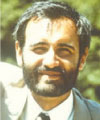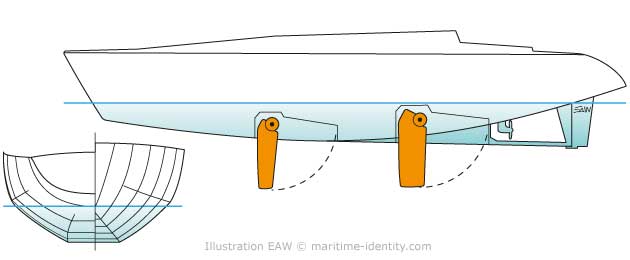 Jean-Louis Noir was aanvankelijk een stedenbouwkundig architect die zich later heeft gericht op jachtontwerp en maritiem engineering. Hij staat bekend als een uitvinder en ontwerper, innovatief, onorthodox en fervent voorstander van het midzwaard.
Jean-Louis Noir was aanvankelijk een stedenbouwkundig architect die zich later heeft gericht op jachtontwerp en maritiem engineering. Hij staat bekend als een uitvinder en ontwerper, innovatief, onorthodox en fervent voorstander van het midzwaard.
Zijn eerste succesvolle boot was de Nuits Blanches, een prototype gemaakt voor de Micro Cup 1977. Een 5.5 meter boot uitgerust met twee a-symmetrische naast elkaar geplaatste zwaarden en binnenballast. Met een isometrische romp waarbij de waterlijnen symmetrisch blijven ongeacht de hellingshoek. De prestaties van de boot waren verbluffend maar de IOR meting stond deze innovatie niet toe. Een aantal jaren later vinden we een aantal ideeën hiervan terug toegepast op de T7.


Na de T7 is Jean-Louis Noir met name bekend als de architect van de Via’s 39′, 42′ en 52′, de grote zussen van de T7. Een serie aluminium zeegaande zeiljachten, ook met twee midzwaarden maar dan achter elkaar of ‘inline’ geplaatst. Het onderwaterschip van de Via’s hebben net als de T7 een smal plat vlak en valt daarom ook mooi rechtop droog.


In 1979 ontving hij de prijs ‘Prix du bateau de l’année’ verbonden aan de Salon Nautique International in Parijs voor de ontwerpen Via ’36 en de Dufour T7. Vanaf de jaren ’90, wendde hij zich tot fundamenteel onderzoek gericht op multihulls geïnspireerd door de traditionele boten uit de Stille Oceaan en vlieger voortstuwing en profielen als efficiënte aerodynamische kracht.
Jean-Louis Noir is in 2011 overleden kort voor het moment dat ik op zoek was naar de man voor meer informatie en achtergronden over de T7. Zoekend op internet naar een ingang trof ik zijn naam aan in een overlijdensbericht in een pdf van de krant Le Monde. Via dat bericht heb ik contact kunnen krijgen met de stichting Terre Ciel Mer Energie, Fonds de dotation Jean-Louis Noir. Een fonds dat na zijn overlijden door vrienden opgericht is en zich ten doel stelt zijn archieven en maritiem nalatenschap te beheren en fondsen te werven om de uitvindingen en projecten van JLN te kunnen realiseren. Hier gaat het dan met name om bepaalde ideeën omtrent multihull rompen en voortstuwing middels vliegers.
Gelukkig heb ik van de Dufour Association het volgende interview met Jean-Louis Noir mogen publiceren waarin hij het T7 ontwerp zelf toelicht.
T7 door de ogen van de ontwerper
At first glance, the Dufour T7 is different from any other boat, so we reveal the thoughts of her designer Jean-Louis Noir, who explains the innovations of this yacht.
VM: Jean-Louis Noir, why design a total centreboard boat?
JLN: This type of boat allows total independence from marinas and other costly moorings. A simple trailer allows its transport and launch into water without any external aids on any beach. The total absence of any projection below the hull allows one to beach anywhere you want and without beaching legs. Briefly, the centre boarder allows you to beach at any time of day or night. On the other hand, a fixed keel, in a foaming sea on the beam is rather uncomfortable, whereas with the with the centreboard, it can be raised and therefore remain more stable. This fact was noticed by Daniel Gilard during his Mini-Tranat race.
VM: The great innovation with the T7 is its adjustable centre-blade – can you explain how it work?
JLN: It is effectively thanks to this system that the T7 has attracted so much interest. The principle is simple: a traditional fin keel must obligatorily slip sideways to be effective. As the yacht no longer progresses along its true axis, there is a resulting loss of speed and angle of sailing of over 4°. The variable angle centreboard reduces these losses by controlling the water flow in a manner similar to a “trimmer”. It allows the boat to progress along its true axis without leeway. The improvement leads to better sailing angle when close hauled, which in turn leads to improved efficiency of the sails, increasing speed because of less drag and therefore improved overall performance by between 20 – 58% in the case of the T7.
The progressing angling of the centreboard can be seen from the diagram (Not available at present). By using this system we have been able to win the Micro Cup two years running. After little more than one years development, this technique is fully proven and has been put into mass production of the T7. This makes the T7 the first total centre boarder equipped with this variable angled centreboard in mass production.
VM: Finally, what are the advantages of the centre cockpit?
JLN: It allows us to bring all the weight into the centre of the boat, thus reducing pitching and a much smoother motion through the waves is achieved. In the event of being pooped, the trim of the boat is maintained and as a result the cockpit empties very efficiently via the engine well.
Finally, the cockpit splits the yacht into two. The aft cabin will become a kid’s haven or that of friends. During my summer cruise on the T7, the kids made it into their playroom. The saloon will become the owners cabin. Each person’s privacy will be respected. Furthermore, a cockpit canopy spread above the cockpit will transform this into another room.